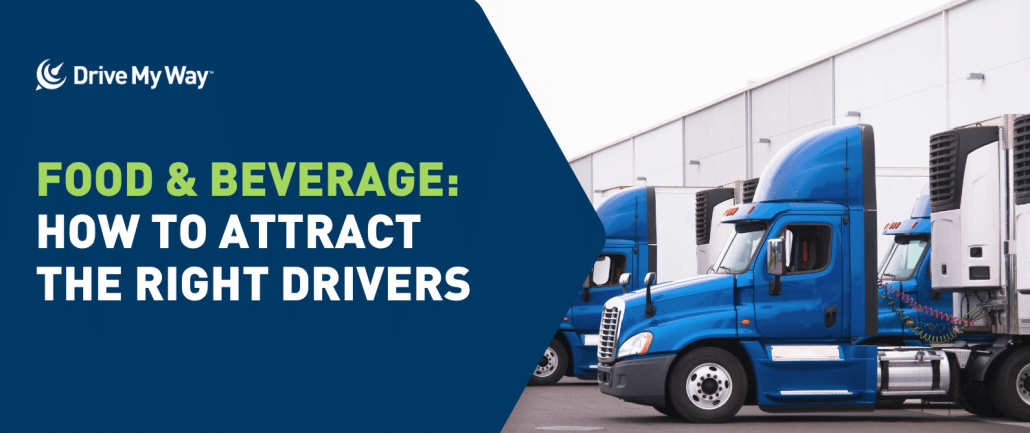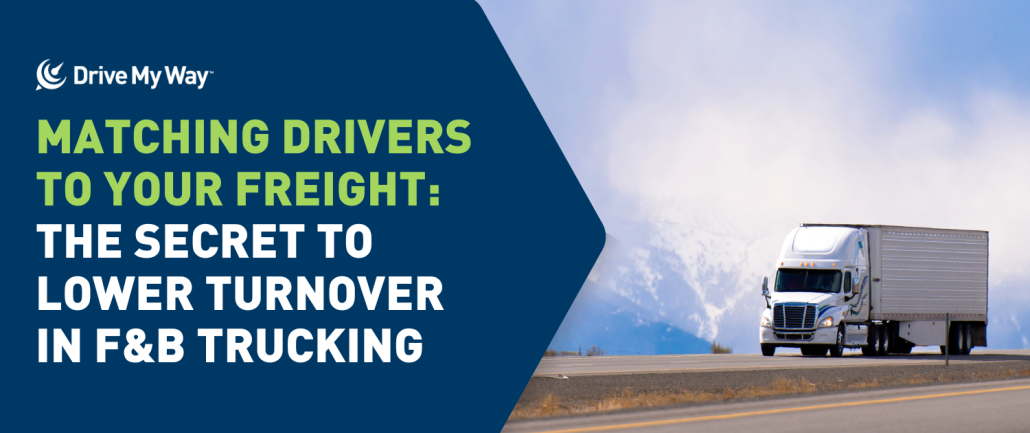
The food and beverage supply chain depends on drivers who can handle specialized equipment, manage seasonal peaks, and deliver products safely.
For carriers, finding drivers who meet these needs is a constant challenge in today’s competitive labor market. Recruiting the right talent requires more than traditional methods, which often result in wasted time and limited success.
Foodliner and Button Transportation are two carriers that turned to Drive My Way to improve their recruiting strategies. By partnering with a platform built around matching drivers to jobs they want and qualify for, both companies were able to bring on new drivers efficiently while lowering costs and improving retention.
Helping Carriers in a Niche Industry
Recruiting in the food and beverage industry brings challenges that set it apart from other sectors of trucking. Many roles require additional endorsements for tankers, hazmat, or doubles. Companies may need to scale up hiring quickly during harvest or production surges, and, unlike general freight, specialized bulk and agricultural loads often demand experience that not every CDL driver has.
Conventional recruiting solutions often fall short of these needs. Carriers receive large volumes of applications that may not meet requirements, leaving recruiting teams with more screening work and fewer viable candidates.
Drive My Way approaches the process differently. By matching drivers with jobs based on their skills, experience, and personal preferences, the platform ensures carriers connect with drivers who are both qualified and interested in the work.
For food and beverage carriers, this means a pipeline of candidates who are more likely to succeed in the role. It also translates to faster hiring, lower costs per hire, and stronger retention.
“We work with Drive My Way because it produces results, and that’s so important when it comes to recruiting drivers,” said Rod Anstead, a Safety Director at Button Transport.
Foodliner: Prioritizing Quality Over Quantity
Foodliner, the largest bulk food-grade carrier in the United States, needed to expand its roster of regional and local CDL A drivers for both liquid and dry bulk loads. With a fleet of 500-1,000 trucks, the company’s standards for safety and fit are high.
Their recruiting team faced the common challenge of balancing application flow with quality, and they wanted to avoid spending time sorting through unqualified or incomplete applications.
That’s where Drive My Way could make a difference. In just five months, Foodliner brought four new drivers onboard through the platform, with an average cost per hire of $900 and a 60-day time to hire. More importantly, those hires matched Foodliner’s needs from day one.
“The Drive My Way website and dashboard are very user friendly and provide a lot of great information,” said Tim Yochum, Director of Recruiting at Foodliner. “Drive My Way is out in front with their technology compared to other recruiting companies. They have developed tools with the end user in mind: drivers and transportation companies.”
Beyond technology, Foodliner emphasized the collaborative nature of the relationship. “Drive My Way respects our opinion and decisions. We can be honest about what is working and what is not working from both sides, it is not a one-way street,” Yochum said.
For Foodliner, it wasn’t just about filling trucks, it was about working with a partner who understood their business and valued quality over quantity.
Button Transportation: Meeting Seasonal Demands
For Button Transportation, a family-owned company based in California for over 40 years, seasonal hiring is the biggest challenge. The carrier hauls fertilizer, harvest goods, and other agri-business freight, which means their hiring needs spike at two critical points each year.
Finding qualified drivers quickly, especially those with hazmat, tanker, or doubles endorsements, can make or break a season.
Partnering with Drive My Way allowed Button to tackle this problem head-on. In only two months, the company hired ten drivers, bringing their cost per hire down to just $180. The ability to meet seasonal needs without sacrificing driver quality was a game-changer.
“It’s been a long time since we’ve filled our trucks, and thanks to Drive My Way, we’re so close to not only filling them, but also having rotational drivers,” said Rod Anstead, Safety Director at Button. “We are a seasonal carrier with two major hiring peaks throughout the year, and it’s important for us to fill the trucks with qualified, good drivers.”
Safety Supervisor James Villanueva echoed the sentiment, saying “I would absolutely recommend Drive My Way to other companies. Our partnership has been a big part of my success here at Button Transportation.”
In an industry where specialized freight and seasonal hiring make recruiting even more complex, Drive My Way helps carriers connect with drivers who are ready and qualified for the work.
For more ways to stay ahead of the curve in the transportation industry in 2025, be sure to check out the rest of our Employer Blog posts and connect with us on social media.




